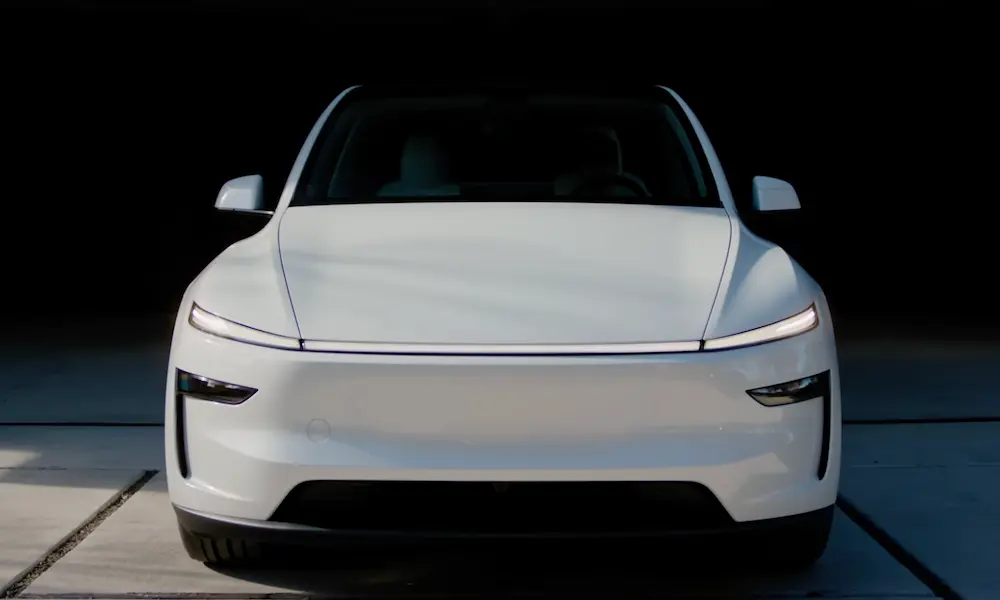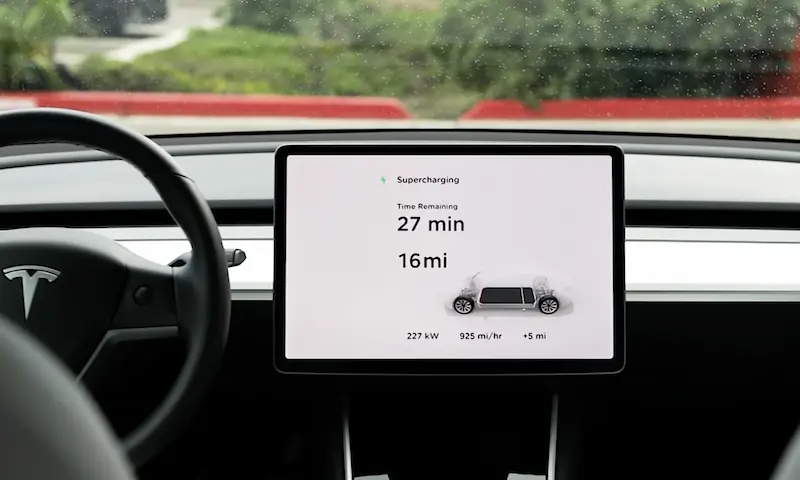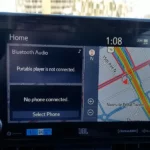Ever looked at your Tesla and wondered about the best way to keep it charged? You’re staring at two options: the sleek Wall Connector mounted permanently in your garage, or the portable Mobile Connector that fits in your trunk. It’s not just about convenience—it’s about charging speed, installation costs, and how you actually use your Tesla day-to-day.
Let’s cut through the confusion and help you decide which charging solution actually makes sense for your Tesla lifestyle.
The Key Differences at a Glance
When you’re choosing between Tesla’s Wall Connector and Mobile Connector, you’re essentially deciding between speed and convenience versus flexibility and portability.
| Feature | Wall Connector | Mobile Connector |
|---|---|---|
| Max Charging Speed | 48 amps (44 miles/hour) | 32 amps (30 miles/hour) |
| Installation | Professional installation required ($750-$3,000) | Plug-and-play, no installation |
| Price | $420 | $275 |
| Cable Length | 24 feet | 20 feet |
| Best For | Daily home charging | Travel and occasional charging |
Wall Connector: Power and Performance
The Wall Connector isn’t just Tesla’s premium home charging solution—it’s an investment in faster, more convenient daily charging.
Charging Speed That Makes a Difference
The Wall Connector delivers up to 48 amps of power (11.5 kW), adding approximately 44 miles of range per hour to your Model 3 or Model Y. That’s significantly faster than what you’ll get from the Mobile Connector.
Let’s put this in perspective: if your daily commute is 60 miles round trip, you can fully recover that range in less than 90 minutes with the Wall Connector. With a standard 120V outlet and the Mobile Connector? That would take about 20 hours.
Installation Requirements
Installing a Wall Connector isn’t a DIY project. You’ll need:
- A dedicated 60-amp circuit (can be configured for lower amperage)
- Professional installation by a licensed electrician
- Sufficient capacity in your electrical panel
The hardwired connection eliminates the wear and tear that comes with repeatedly plugging and unplugging a connector, making it more durable for daily use.
Smart Features You’ll Actually Use
Unlike the Mobile Connector, the Wall Connector includes:
- Wi-Fi connectivity for over-the-air updates
- Power sharing capability (up to 4 Wall Connectors on the same circuit)
- Remote monitoring through the Tesla app
- Scheduling features to charge during off-peak hours
If you want to schedule your charging to take advantage of cheaper overnight electricity rates, the Wall Connector makes this process seamless.
Mobile Connector: Flexibility When You Need It
The Mobile Connector is Tesla’s portable charging solution that prioritizes versatility over raw charging speed.
Portable Power for Every Situation
At just $275, the Mobile Connector comes with a standard 120V adapter and can be used with various outlet types when you purchase additional adapters. This flexibility makes it ideal for:
- Road trips where you might stop at RV parks with NEMA 14-50 outlets
- Charging at a friend’s house or rental property
- Having a backup option if your primary charging solution fails
With its 20-foot cable, you can reach your charging port in most standard parking situations, though it falls slightly short of the Wall Connector’s 24-foot reach.
Realistic Charging Speeds
Let’s be honest about the Mobile Connector’s performance:
- With a standard 120V outlet: Only 3 miles of range per hour
- With a NEMA 14-50 (240V) outlet: Up to 30 miles of range per hour
This stark difference means the Mobile Connector is really only practical for daily use if you have access to a 240V outlet. Otherwise, you’re looking at overnight charging that might not fully replenish your battery.
No Installation Required (Sort Of)
While the Mobile Connector doesn’t require installation itself, getting the most from it often means installing a 240V outlet like a NEMA 14-50 in your garage. This typically costs $500-$1,500—less than a Wall Connector installation but still a significant expense.
Real-World Charging Scenarios
Understanding how each charger performs in typical situations can help clarify which option makes more sense for your lifestyle.
Daily Commuter Reality
If you drive 40 miles each day to work:
- Wall Connector: Fully recharges in less than 1 hour
- Mobile Connector with 240V: Recharges in about 1.5 hours
- Mobile Connector with 120V: Takes over 13 hours
For consistent daily use, the Wall Connector’s speed advantage becomes increasingly valuable as your daily driving distance increases.
Weekend Road Tripper
If you regularly take long trips:
- Wall Connector: Great for overnight charging at home before and after trips
- Mobile Connector: Invaluable during the trip for unexpected charging opportunities
Many Tesla owners actually end up with both—using the Wall Connector at home and keeping the Mobile Connector in their trunk for emergencies or travel.
Cost Comparison: Initial vs Long-Term
When making your decision, consider both upfront and long-term costs.
Upfront Investment
Getting started with each option costs:
- Wall Connector: $420 for the unit + $750-$3,000 for installation
- Mobile Connector: $275 for the unit + $0-$1,500 for a 240V outlet installation
The Mobile Connector appears significantly cheaper initially, but this gap narrows if you need to install a 240V outlet to make it practical for daily use.
Long-Term Value
Over a 10-year period, consider these factors:
- The Wall Connector’s faster charging reduces reliance on expensive Supercharging
- The Mobile Connector’s outlet connection may require replacement due to wear ($150 every 5 years)
- The Wall Connector’s 4-year warranty exceeds the Mobile Connector’s 1-year coverage
For homeowners planning to own multiple Teslas or keep their vehicle long-term, the Wall Connector often provides better value despite its higher initial cost.
Installation Considerations
Before choosing your charging solution, evaluate your home’s electrical capacity and installation requirements.
Wall Connector Installation Realities
The complexity of Wall Connector installation varies dramatically based on:
- Distance from your electrical panel to the installation location
- Current capacity of your electrical panel
- Whether trenching or drilling through walls is required
Simple installations with short cable runs and sufficient panel capacity might cost around $750-$1,500, while complex installations requiring panel upgrades or long cable routes can reach $2,000-$3,000.
240V Outlet Installation for Mobile Connector
If you’re leaning toward the Mobile Connector with a 240V outlet:
- NEMA 14-50 outlets typically cost $500-$1,000 to install
- Your electrical panel must support a 50-amp circuit
- The outlet should be located within 20 feet of your parking space
The installation complexity for a 240V outlet is usually less than a Wall Connector, but the charging speed difference means you’ll spend more time actively charging.
Environmental Durability
Both charging options are designed for different environmental conditions:
Wall Connector Durability
The Wall Connector features:
- IP55-rated enclosure (protected against dust and water jets)
- Operating temperature range from -30°C to 50°C
- Permanent mounting to protect against physical damage
- Weather resistance for outdoor installation
These features make it suitable for permanent installation in garages, carports, or even fully exposed outdoor locations in most climates.
Mobile Connector Limitations
The Mobile Connector is weather-resistant but has some limitations:
- Not designed for permanent outdoor exposure
- Connections to outlets can be affected by moisture
- More susceptible to damage from being dropped or crushed
- Less robust against temperature extremes during active charging
The Mobile Connector is engineered primarily for temporary or occasional use rather than as a permanent charging solution.
Making the Right Choice for Your Tesla
Your ideal charging solution depends on your specific circumstances and needs.
The Wall Connector Makes Sense If:
- You have dedicated parking at your residence
- You drive significant daily miles (30+ miles per day)
- You value the convenience of faster charging
- You own or plan to own multiple Tesla vehicles
- You have stable living arrangements (own your home)
The Mobile Connector Is Better When:
- You drive limited daily miles (under 30 miles)
- You live in a rental property or plan to move soon
- You need charging flexibility for travel
- You have budget constraints for upfront costs
- You already have a 240V outlet installed
Technical Performance in Detail
Beyond the basic specifications, there are some technical nuances worth understanding.
Charging Efficiency
The Wall Connector’s hardwired connection minimizes energy loss (typically 3-5%) compared to the Mobile Connector’s plug-in design, which introduces slightly higher losses (5-7%) due to resistance at the outlet interface.
Over a year of daily charging, this difference could result in 15-20 kWh of additional consumption for Mobile Connector users—not a huge amount, but something to consider in your total cost evaluation.
Thermal Management
Both charging solutions include thermal sensors to protect against overheating:
- The Wall Connector actively manages power output based on temperature
- The Mobile Connector will throttle charging if the adapter or outlet becomes too hot
In practical terms, the Wall Connector’s fixed installation leads to more consistent thermal performance, while the Mobile Connector may experience more variable conditions depending on outlet quality and environment.
Common Usage Patterns
Many Tesla owners end up adopting a hybrid approach:
- Home Base: Wall Connector installed at home for primary daily charging
- On the Go: Mobile Connector kept in the vehicle for emergencies and travel
- Destination Charging: Relying on Tesla Superchargers and destination chargers for longer trips
This combination provides maximum flexibility and convenience, though it represents the highest initial investment.
Grid Load Management and Scheduling
The Wall Connector’s smart features offer advantages for managing electricity costs:
- Schedule charging during off-peak hours via the Tesla app
- Automatically adjust charging rates based on grid conditions
- Coordinate with other Tesla energy products like Powerwall
Mobile Connector users have fewer scheduling options and must rely on the vehicle’s basic charging schedule features rather than connector-level intelligence.
The Final Verdict on Tesla Wall Charger vs Mobile Charger
After comparing every aspect of these charging solutions, here’s the straightforward advice:
If you can afford the upfront investment and own your home, the Wall Connector delivers superior daily convenience and long-term value. Its faster charging speeds and smart features make Tesla ownership more seamless.
If you rent, move frequently, or have limited daily driving needs, the Mobile Connector with a 240V outlet provides sufficient charging at a lower initial cost. Its portability also makes it valuable as an emergency backup.
Many Tesla owners eventually acquire both, using the Wall Connector for daily charging and keeping the Mobile Connector for travel or as a backup. This comprehensive approach maximizes convenience while ensuring you’re never stranded without charging options.
Remember that choosing your charging solution is about matching your personal driving habits and living situation—there’s no one-size-fits-all answer for every Tesla owner.












